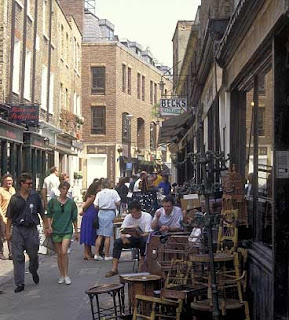
There is a slew of new reports marking the continuation of the high-profile antiquities prosecutions in Rome.
The New York Times has a piece, and the
Washington Post picks up an AP story. Francesco Rutelli also has an Op-Ed in the
Wall Street Journal, which can be downloaded from the Italian Ministry of Culture's website
here.
Is there anything new being said? Not really. Much of the back and forth involves trial tactics and public posturing on the part of Rutelli. Though he has some good arguments in his opinion piece, much of it is frustratingly vague or inaccurate. When he speaks of Italy "renouncing possession of these works of art" in reference to 46 contested objects held by the Getty, he conveniently fails to acknowledge the Getty has agreed to return 25 of them. Also, his claims of providing "exhaustive and reliable documentation" to the Getty may be true, however if the evidence were as damning as he indicates, Italy would certainly have first, asked US federal prosecutors to initiate a civil forfeiture action as they did in
US v. An Antique Platter of Gold 184 F.3d 131 (2d Cir. 1999). This would have allowed for the return of the objects, while the US Department of Justice foots the legal bills. Thus, it seems to me that the evidence Ruteli is discussing may not be quite as damning as he indicates. He also makes it seem as if the issue of this bronze Athlete found in the Adriatic sea clearly belongs to Italy. This is a gross oversimplification. There seems to be good arguments that the object was found in international waters, and was in fact Greek in origin. Though he may be right that the bronze came ashore in Italy, the law violated would be an Export restriction, not a state-vesting provision. This makes Italy's claim much different. If nothing else, the article was well-timed to coincide with the reopening of the trial in Rome though.
At the trial itself, the testimony of Pietro Casasanta seems intriguing. He details over 50 years of his experience dealing in Italian antiquities. He was testifying for the prosecution, not because he had any ties with the defendants, but because he played a role in the antiquities trade in general. He indicated that "From one day to the next we went from art experts to criminals...I saved thousands of artifacts that would have been ground into cement. ... It's a shame that they don't make me a senator for life." Interesting comments, especially given Italy's recent efforts at stemming the trade. Perhaps the biggest gain Italy has made in recent years is cutting off Switzerland as a transit state. Switzerland has recently signed on to the UNESCO Convention and, more importantly, secured a bilateral deal with Italy.
UPDATE:
Lee Rosenbaum continues her good work on this controversy by soliciting a response from Michael Brand, Director of the Getty Museum. He clarifies many of the charges leveled against him. Perhaps most interesting, he indicates that the Getty is careful when repatriating objects. In fact, one of the objects claimed by Italy "a Kore ... had been claimed by both Italy and Greece, and we now have agreed to return that object to Greece. This is precisely why we have to respond to these claims very carefully." That seems reasonable, and in fact much of Brand's comments paint a picture of the Getty attempting to work out a reasonable compromise with Italy.
Of course, the true nature of the negotiation process may lie somewhere between Brand and Rutelli's conflicting accounts. However Rutelli often seems inclined to elevate the rhetoric. However, regardless of the outcome of the negotiations, it would seem that the Italians have accomplished a great deal. Certainly, reputable institutions and museums are now thinking twice about acquiring Greek, Roman, or Etruscan objects which might have come from Italy. A protracted public relations struggle is certainly not good for the public image.

















